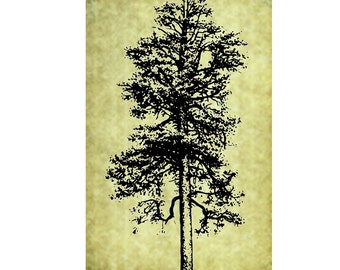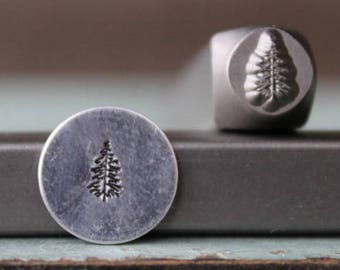
It represents how hard or soft the edges of your selection are.
#PINE TREE STAMP FOR AFFINITY PHOTO HOW TO#
Hardness is possibly the most important tool setting to familiarize yourself with when it comes to knowing how to properly use the Clone Brush in Affinity Photo. This setting can be useful depending on your image and what exactly it is you’re trying to do. Lowering this value will make it so that it requires several brush strokes to fully paint in your clone. The Flow setting represents the speed (or intensity) at which your clones are drawn.īy default this setting should be 100%, meaning you can paint with your clones in a single brush stroke. However, you can reduce the opacity to make your clones partially transparent if need be. The Opacity setting allows you to change the opacity of the clones you’re creating.īy default the opacity should be set at 100%, meaning that the clones you create will be just as opaque as the original source that you sampled it from. This method makes it much easier to size up your brush on the canvas. This is why it is recommended that you use the bracket keys instead. This is because there’s no way to see exactly how big the brush is while making this changes.

Using the width setting is an inefficient way of sizing up your brush though.

The only difference is that it gives you a slider to manually size up the brush, and it has a numerical input box as well in case you need your brush to be a specific size. Much like the bracket keys, the Width setting allows you to change the size of your brush. It’s important to familiarize yourself with these settings as they will allow you to tweak and refine your selections further so that you can make the most precise clone possible.Ĭontinue on to see what each of these settings do. Now that we’ve gone over how to use the Clone Brush in Affinity Photo, let’s go over some of the tool options, which are located in the toolbar towards the top of your screen: The Clone Brush tool settings are located near the top of the screen. If at any point you’d like to undo the clone, simply press Control + Z on your keyboard and you can try it again if need be. This will effectively “clone” your subject and place it in your chosen location. To clone your selection, all you have to do now is simply click and drag anywhere on your canvas to paint with the selection: The subject on the right is cloned from the original subject on the left. Step 4: Click and drag elsewhere on your image to paint with the clone selection When done correctly you should notice that the selection has been copied to the brush: The copied selection should populate within your cursor. Once you’ve sized up your brush to fit nicely around your subject, hover your cursor over the subject and click on it once while holding the Alt key.ĭoing so will grab a sample of the selection your brush is placed over. Step 3: Place the brush over your subject and click once while holding Alt The left bracket key ( ) will make the brush larger: The left and right bracket keys on your keyboard allow you to decrease and increase the size of your brush respectively.

To change the size of your clone brush, use the bracket keys on your keyboard. This circle represents the size of the brush and will determine exactly what is cloned, so you will have to adjust the brush size to fit entirely over your subject. Once you have the Clone Brush enabled, you will notice a circular selection on your canvas that follows your cursor. Step 2: Adjust the size of the brush using the bracket keys You can also access it by pressing S on your keyboard.Īlternatively, you can access it by using the keyboard shortcut, which is the letter S. Step 1: Select the tool from the tool menuįirst, grab the Clone Brush tool from your toolbox on the left-hand side of the screen: The Clone Brush is located towards the bottom of the toolbar. Then, we will comb over all of the details and tool settings so that you can tweak your selection until it’s just right.

In this first part of the lesson we will be going over the basics of using the Clone Brush in terms of its functionality. Step 4: Click and drag elsewhere on your image to paint with the clone selection Clone Brush Tool Settings.Step 3: Place the brush over your subject and click once while holding Alt.Step 2: Adjust the size of the brush using the bracket keys.Step 1: Select the tool from the tool menu.Table of Contents How To Use The Clone Brush Tool


 0 kommentar(er)
0 kommentar(er)
